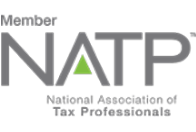The Internal Revenue Service (IRS) requires tax returns be reported in U.S. dollars. This means that U.S. taxpayers living and working abroad, except qualified business units (QBU), must report and translate their income into U.S. dollars.
However, even if you are domestically based, you may still need to make foreign currency translations when you file your returns if you receive income or pay expenses in foreign currencies.
Converting foreign currency transactions into U.S. dollars
In general, you must convert into U.S. dollars foreign currency transactions using the prevailing rate when you accept or pay the foreign currency.
The formula to convert foreign currency transaction is simple, just divide the foreign amount by the applicable exchange rate. However, the thing that makes the conversion process a little confusing is that the IRS has no official exchange rate.
Generally, except for some specified reports, the IRS accept any posted rates that is used consistently.
The IRS recommends using those posted by banks or U.S. embassies. Other external resources shared by the IRS for daily exchange rates are Oanda, Xe, and X-Rates.
The key is to select an acceptable source of exchange rates and consistently use the same source when you do tax reporting requirements.
If there is more than one exchange rate, the IRS instructs to use the rate that is most applicable to your current situation or most reflective of your income or expense.
IRS-Approved Exchange Rates
What if you find yourself in a situation where you discover that you have incurred numerous qualified deductible foreign currency expenses, but the task of determining the conversion rate for each day of the transaction seems endless? You may use any of the following IRS-approved conversion rates.
- IRS Yearly average currency exchange rates represent the average value of a foreign currency in terms of U.S. dollars each year. This may be a popular choice for translating foreign currencies however it has a limited list of available foreign currency. Find the IRS page here for the yearly average rates.
- U.S. Treasury Department’s currency exchange rates provide the closing rate for each quarter in a year. It has a broader list of foreign currencies as compared to the yearly average rates.
Also, you must use the Treasury rates if you are required to attach a Form 8938, Statement of Specified Foreign Financial Assets when you file your annual return since the 8938 form requires the use of the December 31 U.S. Treasury rate, regardless of when the transaction happened. Here is the link to check the Treasury rates.
By using these IRS-approved exchange rates, you can simplify the conversion process and ensure consistency in your filed returns.
Want to learn more?
You may want to consult and work with 1099 Accountant – We offer online bookkeeping, online advisory services and online tax and accounting services. We offer reasonable rates. We only work with independent contractors, freelancers, and one-person business. We work with locum tenens from California to New York City and everywhere in between. Yes, even Hawaii!
Contact us toll-free (855)529-1099 or make an appointment for a free consultation. Contact Us











